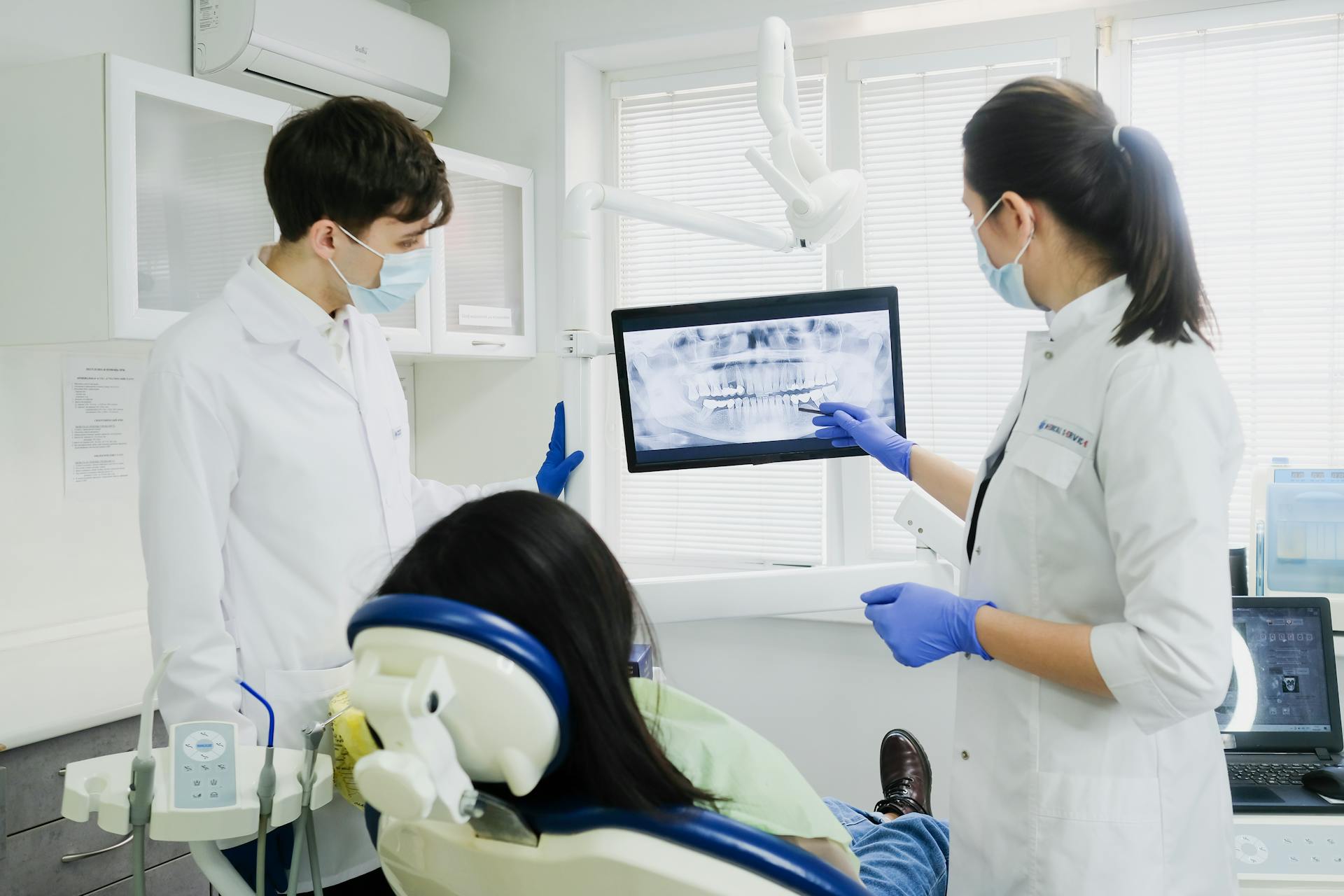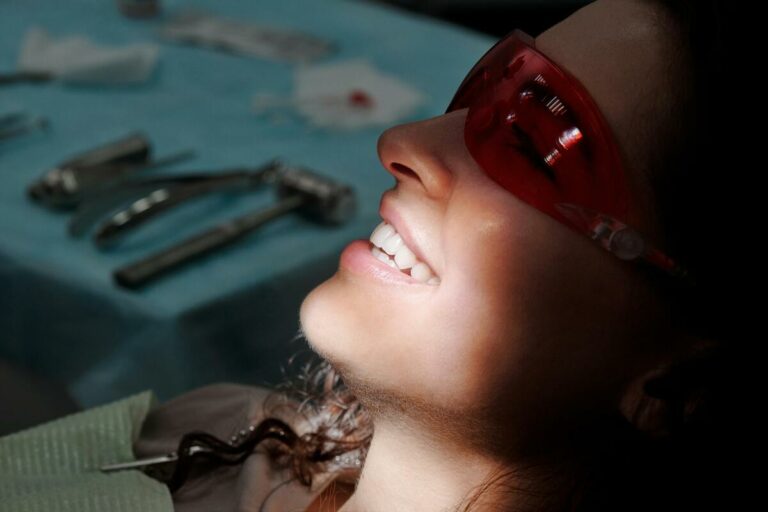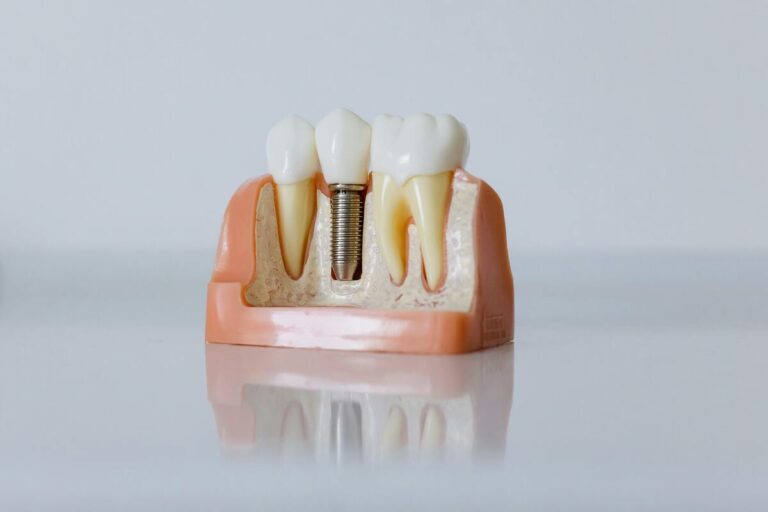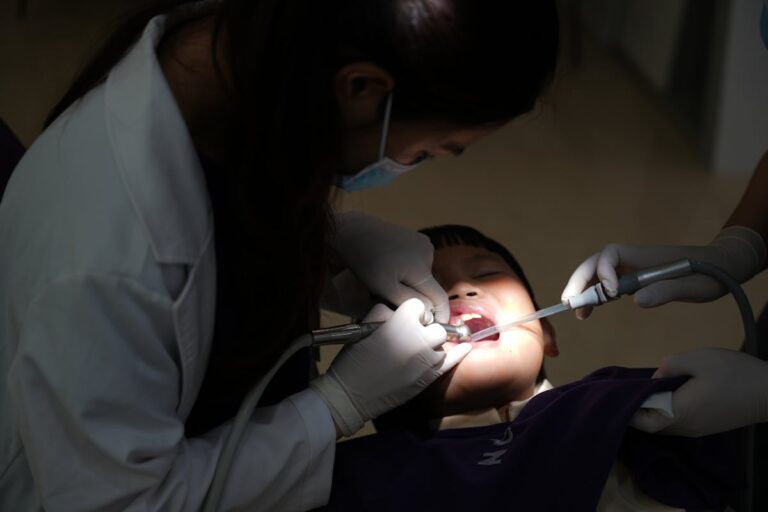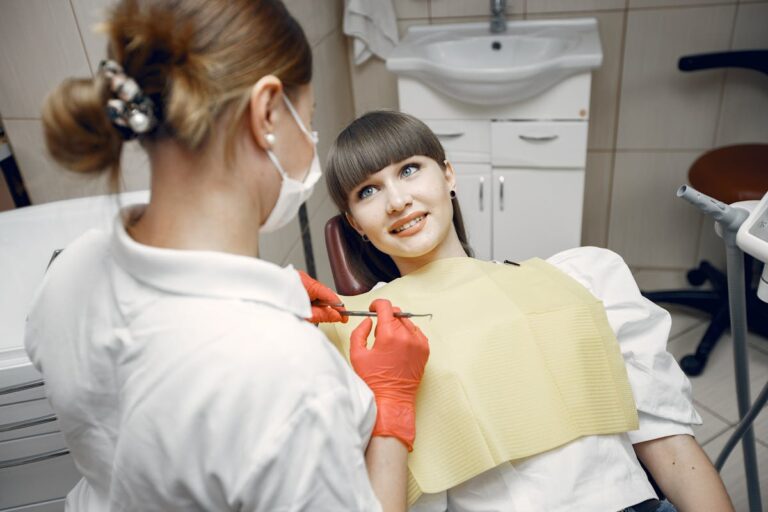What to Expect During Your First Dental Visit
Upon arriving for a first dental visit, new patients can anticipate the straightforward task of completing initial paperwork and providing a health history. This essential step involves answering initial questions regarding previous medical conditions, medications, and any allergies they might have. The collected information is vital, as it allows dental professionals to tailor personalized care and guarantee safety during treatments. A detailed medical history aids in identifying potential complications or contraindications with dental procedures. Patients may also be asked about lifestyle habits, such as smoking or alcohol consumption, which could affect oral health. By providing thorough and accurate details, patients contribute to a more efficient and effective dental care experience, making certain their needs are met while under the care of the clinic.
Meeting the Dental Team
Meeting the dental team is an essential part of the initial visit that sets the tone for a patient’s experience. Upon arrival, patients often receive a warm welcome from the receptionist, who handles scheduling and administrative tasks. This is followed by a team introduction, where key staff members are presented. The dental hygienist, responsible for teeth cleaning and initial assessments, is typically the next point of contact. During this introduction, the dentist, who oversees patient care and treatment plans, is also introduced. Each staff member explains their roles, ensuring the patient understands who to approach with specific concerns. This structured team introduction fosters a comfortable environment, making patients feel valued and informed about the staff roles dedicated to their care.
The Oral Examination Process
@ Midjourney AI Image Prompt: /imagine prompt:The photograph captures a pristine dental examination room bathed in soft, natural light. A dentist in a crisp white coat, wearing a gentle smile, examines a young patient’s teeth with precision tools. The patient, seated comfortably in a modern dental chair, looks relaxed. Nearby, a gleaming tray holds an array of dental instruments. On the wall, a bright x-ray display highlights teeth structure, providing an educational backdrop to the scene. –v 6 –ar 16:9
After becoming acquainted with the dental team, patients proceed to the oral examination process, a critical step in evaluating oral health. During this process, the dentist employs various examination techniques to assess the patient’s oral cavity. Initially, the dentist visually inspects the teeth, gums, and other soft tissues for signs of decay, gum disease, or abnormalities. Using a small mirror and dental probe, they meticulously examine each tooth’s surface for cavities or enamel issues. The dentist also checks the patient’s bite alignment and jaw function, ensuring that everything operates smoothly. Additionally, they evaluate the health of the gums, looking for signs of inflammation or infection. These thorough examination techniques provide a foundational understanding of the patient’s current oral health status.
Dental X-Rays: What You Need to Know
Dental X-rays play an essential role in identifying issues that are not visible during a standard oral examination, such as cavities between teeth or bone loss. Safety is a top priority, and modern X-ray techniques use minimal radiation exposure to guarantee patient protection. The frequency of dental X-rays depends on individual health needs and risk factors, with dentists providing recommendations based on each patient’s specific situation.
Purpose of Dental X-Rays
X-rays serve as an essential diagnostic tool in dentistry, allowing for a thorough view of a patient’s oral health that is not visible during a standard examination. The diagnostic importance of dental X-rays lies in their ability to uncover underlying issues such as cavities, bone loss, and impacted teeth, which might otherwise go unnoticed. X-ray technology has advanced considerably, providing clearer images with reduced exposure to radiation, enhancing the dentist’s ability to make informed decisions about treatment. By capturing detailed images of the teeth, bones, and surrounding tissue, X-rays facilitate early detection of potential problems. This early intervention can prevent more severe conditions and aid in the development of personalized treatment plans, ensuring ideal oral health for the patient.
Safety and Frequency Guidelines
Although concerns about radiation exposure often arise, modern dental X-rays are considered safe due to considerable technological advancements. Digital X-ray technology reduces radiation levels considerably, ensuring patient safety remains a top priority. Dentists adhere to strict safety protocols, including using lead aprons and thyroid collars, to further minimize exposure.
Frequency recommendations for dental X-rays vary based on an individual’s oral health, age, and risk factors. Generally, new patients may require a full set of X-rays to establish a thorough dental history. Routine check-ups might involve bitewing X-rays every one to two years, but high-risk individuals may need them more frequently. Dentists assess each patient’s specific needs to determine the appropriate frequency, balancing diagnostic benefits with minimal radiation exposure.
Professional Teeth Cleaning
During the professional teeth cleaning process, a dental hygienist will meticulously remove plaque and tartar buildup to prevent gum disease and cavities. Afterward, they will polish the teeth to eliminate surface stains and apply a fluoride treatment to strengthen enamel. Patients will also receive personalized tips for maintaining oral hygiene at home to guarantee long-term dental health.
Plaque and Tartar Removal
A professional teeth cleaning is a key part of a dental visit, where a dental hygienist meticulously removes plaque and tartar buildup from the teeth. Plaque, a sticky film of bacteria, forms on teeth and can harden into tartar if not removed regularly. Tartar, also known as calculus, firmly adheres to teeth and can only be effectively eliminated through professional cleaning. Hygienists employ specialized tools to gently scrape away these deposits, focusing on areas often missed by regular brushing and flossing. This process not only enhances oral hygiene but also plays an essential role in tartar prevention, reducing the risk of gum disease and cavities. Regular cleanings guarantee a healthier mouth, contributing to long-term dental health.
Polishing and Fluoride Treatment
After the removal of plaque and tartar, the dental visit moves on to the polishing phase, an integral component of professional teeth cleaning. During this stage, the hygienist employs various polishing techniques to smooth the tooth surfaces, effectively removing surface stains and enhancing the teeth’s natural luster. This process not only improves aesthetics but also helps in preventing future plaque accumulation on the polished surfaces.
Following polishing, a fluoride treatment is administered to strengthen the teeth. The fluoride benefits are significant, offering a protective barrier against cavities and enhancing the remineralization process of the enamel. The application is quick and painless, typically involving a flavored gel or varnish. This step is essential for maintaining long-term dental health and ensuring a robust defense against decay.
Tips for Oral Hygiene
Maintaining ideal oral hygiene is essential for prolonging the effects of professional teeth cleaning. Proper brushing techniques involve using a soft-bristled toothbrush, held at a 45-degree angle to the gums. This method helps remove plaque and prevent gum disease. Brushing twice daily for two minutes guarantees thorough cleaning. Additionally, using fluoride toothpaste strengthens enamel and prevents cavities.
Flossing is equally important as it reaches areas between teeth that a toothbrush cannot. It is recommended to floss once a day to remove food particles and reduce plaque buildup. Consistent flossing reduces the risk of gum disease and tooth decay. Regular dental check-ups complement these practices, as they provide professional cleaning and early detection of potential issues, guaranteeing long-term oral health.
Discussing Dental Concerns and Treatment Plans
How does one bridge the gap between dental concerns and effective treatment plans? During a dental visit, it is essential for the patient to communicate their concerns clearly to the dentist. This open dialogue allows the dentist to understand specific issues and tailor treatment options that cater to individual needs. Patient concerns can range from cosmetic desires to apprehensions about procedures or pain management. The dentist, in turn, provides professional insights and suggests evidence-based approaches to address these concerns effectively.
The dentist may outline various treatment options, explaining the benefits and potential drawbacks of each. This collaborative discussion guarantees that the patient is well-informed and involved in decision-making, fostering trust and promoting ideal oral health outcomes. Clear communication is key in achieving a successful treatment plan.
Scheduling Follow-Up Appointments
Effective communication between a patient and dentist sets the stage for ongoing dental health maintenance. After addressing initial dental concerns, scheduling follow-up appointments becomes an essential step. Dental practices often offer scheduling reminders to guarantee patients remember their upcoming visits, enhancing their commitment to oral health care. Patients should inquire about appointment flexibility, as this can accommodate their busy schedules, allowing them to prioritize their dental needs without disrupting other commitments. Dentists typically recommend the frequency of follow-up visits based on individual dental health needs, assuring personalized care. Both parties benefit from a clear understanding of the proposed timeline for future appointments, fostering a proactive approach to dental wellness. Consequently, organized follow-up scheduling contributes considerably to sustained oral health.
Frequently Asked Questions
How Should I Prepare for My First Dental Visit?
One should prepare for their first dental visit by researching appointment expectations and managing dental anxiety. Gathering medical history, practicing relaxation techniques, and listing questions for the dentist can help ease concerns and guarantee a smooth experience.
What Should I Bring to My Dental Appointment?
Patients should bring insurance information and a detailed medical history to their dental appointment. These documents guarantee accurate records and help the dentist provide appropriate care based on any existing health conditions or coverage plans.
Are There Any Pre-Visit Dietary Restrictions?
Before a dental visit, there are typically no strict pre-visit dietary guidelines. However, it is advisable to avoid foods that can stain teeth or cause bad breath to guarantee accurate assessments and a pleasant experience.
How Long Does a Typical First Dental Visit Last?
A typical first dental visit usually lasts about 60 to 90 minutes. This includes a dental procedures overview and time allocated for appointment scheduling tips, ensuring patients understand future visit logistics and necessary treatments.
Can I Bring a Companion to My Dental Appointment?
Bringing a companion to a dental appointment can provide significant benefits. Companions play critical support roles, helping ease anxiety and remembering post-visit care instructions. Most dental offices encourage this, though it’s advisable to check specific office policies beforehand.
